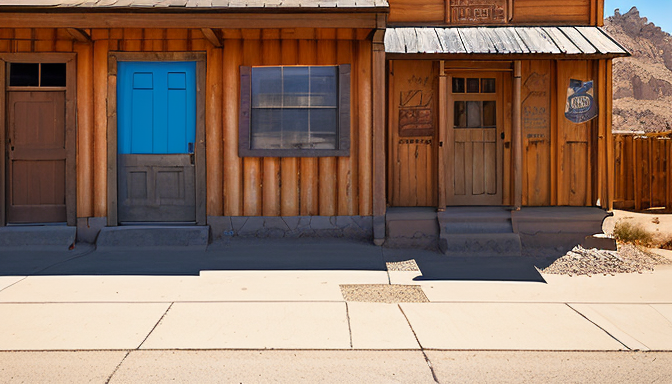When we think of the Western genre, images of rugged cowboys, vast deserts, and dramatic showdowns often come to mind. But what if I told you that this genre is more than just a backdrop for shootouts and horse chases? It’s a rich tapestry that weaves together film and literature, shaping the very essence of American storytelling. The Western frontier is not just a place; it’s a symbol of adventure, freedom, and the eternal struggle between good and evil.
In recent years, filmmakers and authors have taken on the challenge of reinterpreting these classic narratives, breathing new life into age-old themes. Imagine a world where the traditional cowboy is replaced by a strong, complex heroine, or where the dusty saloon transforms into a vibrant community hub. These modern adaptations challenge our perceptions and invite us to explore new dimensions of the Western experience.
As we delve deeper into this fascinating intersection of film and literature, we uncover how these stories reflect contemporary issues, from identity to social justice. They serve as a mirror, reflecting not just the past, but also our hopes and struggles today. So, grab your popcorn and your favorite novel, and let’s explore how the Western genre continues to evolve, offering us a thrilling ride through the heart of American culture.
Modern Adaptations of Classic Westerns
In the ever-evolving landscape of storytelling, the Western genre has undergone a remarkable transformation. Today, filmmakers and authors are not just retelling classic Western tales; they are reimagining them for a new audience. This modern twist on traditional narratives allows for a deeper exploration of themes such as identity, morality, and the human experience. Think about it—how often do we see the rugged cowboy archetype replaced by a complex character grappling with their past? The frontier is no longer just a backdrop; it’s a canvas for rich, emotional storytelling.
For instance, films like Hell or High Water and The Harder They Fall breathe new life into the genre by infusing contemporary issues such as economic disparity and racial dynamics into the classic Western framework. Meanwhile, authors like Rebecca Roanhorse are crafting narratives that challenge the stereotypes of the Old West, showcasing diverse voices and perspectives that were previously marginalized. This shift not only revitalizes the genre but also invites audiences to reflect on the complexities of history and its impact on today’s society.
Ultimately, modern adaptations of classic Westerns serve as a bridge between the past and the present, allowing us to explore the Western frontier through a lens that resonates with contemporary themes. As we dive into these reimagined tales, we find that the spirit of the West is alive and well, continually shaping American storytelling in profound ways.

The Influence of Westerns on Popular Culture
The Western genre has left an indelible mark on popular culture, shaping not just films and literature but also influencing fashion, music, and art. Think about it: when you picture a cowboy, what comes to mind? That iconic hat, rugged boots, and the unmistakable aura of adventure. These elements have transcended the screen and page, embedding themselves into the very fabric of American identity.
From the dusty trails of classic Westerns to modern reinterpretations, the themes of bravery, justice, and freedom resonate deeply with audiences. This genre has become a rich tapestry, weaving stories of heroism and moral dilemmas that reflect societal values. For instance, films like “Django Unchained” and “The Revenant” have not only revitalized the Western but have also sparked discussions about race, survival, and the human condition.
Moreover, the influence of Westerns can be seen in various cultural facets:
- Fashion: Western wear, characterized by denim, leather, and cowboy boots, has made its way into mainstream fashion, often seen on runways and in everyday attire.
- Music: The soundtracks of Western films, featuring twangy guitars and harmonicas, have inspired countless musicians, leading to the rise of genres like country and folk.
- Art: Artists have drawn inspiration from the Western landscape and its iconic characters, creating works that celebrate the rugged beauty of the frontier.
In essence, the Western genre is more than just a cinematic experience; it’s a cultural phenomenon that continues to inspire and provoke thought across generations. So, the next time you don your favorite cowboy hat or hum a classic Western tune, remember the rich history and cultural significance behind it!
Frequently Asked Questions
- What are some examples of modern adaptations of classic Westerns?
Modern adaptations often take the essence of classic Westerns and give them a fresh twist. Films like “True Grit” and “Hell or High Water” reimagine traditional narratives, focusing on themes of justice and morality while incorporating contemporary issues like economic hardship.
- How have Westerns influenced popular culture?
Westerns have left a profound mark on popular culture, influencing everything from fashion to music. Think about the iconic cowboy hats and boots that are still trendy today! Additionally, Western themes can be found in music genres like country and rock, showcasing their enduring legacy.
- Why do filmmakers continue to revisit Western themes?
Filmmakers are drawn to Western themes because they resonate with universal human experiences—like the struggle for freedom and the fight against injustice. By reinterpreting these themes, they connect with modern audiences on a deeper level, making age-old stories feel relevant again.